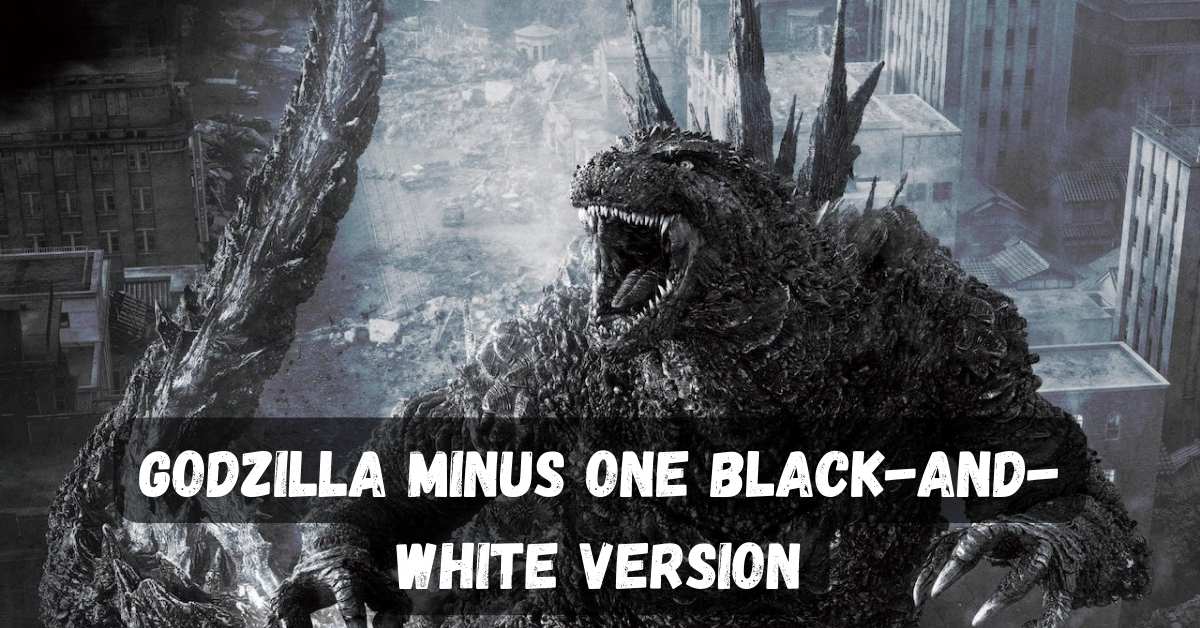Enter a monochromatic realm of iconic destruction as the black-and-white version of “Godzilla Minus One” takes a timeless turn. This filmic masterwork, which began as a colorful visual extravaganza, suddenly takes a radical turn into the world of traditional grayscale. With a nod to the history of film, the enormous fights, the thunderous roars, and the minute details of each monster’s movements are all explored.
The lack of color offers a nostalgic and dramatic touch, allowing viewers to witness Godzilla’s rule from a novel and striking angle. Get ready for the captivating charm of “Godzilla Minus One Black-and-White Version,” where modern genius combines traditional elements.
Godzilla Minus One Black-and-White Version
Distributor Toho International announced that Godzilla Minus One will screen a remastered black-and-white version of the movie for one week when it concludes its noteworthy theatrical run.
On Friday, January 26, Godzilla Minus One/Minus Colour will open in theatres across the United States. The movie’s theatrical run for both versions will come to an end on February 1. Japan launched the black and white edition on January 12.
“I was very happy that the North American audience embraced Godzilla Minus One,” said Takashi Yamazaki, director, writer, and VFX supervisor. “And now I am very pleased to be able to release a black-and-white version for North America as well. Godzilla Minus One/Minus Color will bring a new and visceral experience to audiences.”
He claimed that the remastering was a difficult task and that the monster in the movie had a scarier, more realistic documentary-like sense in black and white than in color.
The movie, which debuted on December 1st, has generated around $51 million at the box office in the United States. It is currently the highest-grossing live-action or animated Japanese film to be released in the country and the fifth-highest-grossing non-English picture.
A giant reptile creature that emerges from the water and breathes radiation terrorizes a shattered Japan near the conclusion of World War II, following the devastation caused by the nuclear bombs dropped on Hiroshima and Nagasaki. In an attempt to destroy it, a group of military officers and citizens, led by kamikaze pilot Kōichi Shikishima (Ryunosuke Kamiki), go rogue.
Here, you can also check our recent articles:
- Reality Check: The Bachelorette’s Rachel Lindsay and Bryan Abasolo’s Shocking Divorce News
- What Happened to Bret Baier on Fox News? His Illness & Health Update
Godzilla Minus One/Minus Color Has a Documentary Vibe
The director stated, “The original Godzilla from 1954 is, of course, in black and white.” But that alone piqued our curiosity about what a black-and-white, contemporary Godzilla movie may look like.
However, we realized that just eliminating the color would not elicit the same feeling in viewers, so we went back to the colorist and, rather than just pressing the remove color button, we mask[ed] different parts of each shot and manually adjusted the contrast. It appears to have been put together by a skilled still shooter thanks to this technique.”
“For us, taking away the color somehow makes it feel more real, almost like a documentary, giving viewers the impression that Godzilla is real,” Yamazaki went on.
Even the crew members working on the film would get shivers from this version of the movie, which is way scarier than Godzilla Minus One in color since it does feel like a different movie in a lot of respects.
